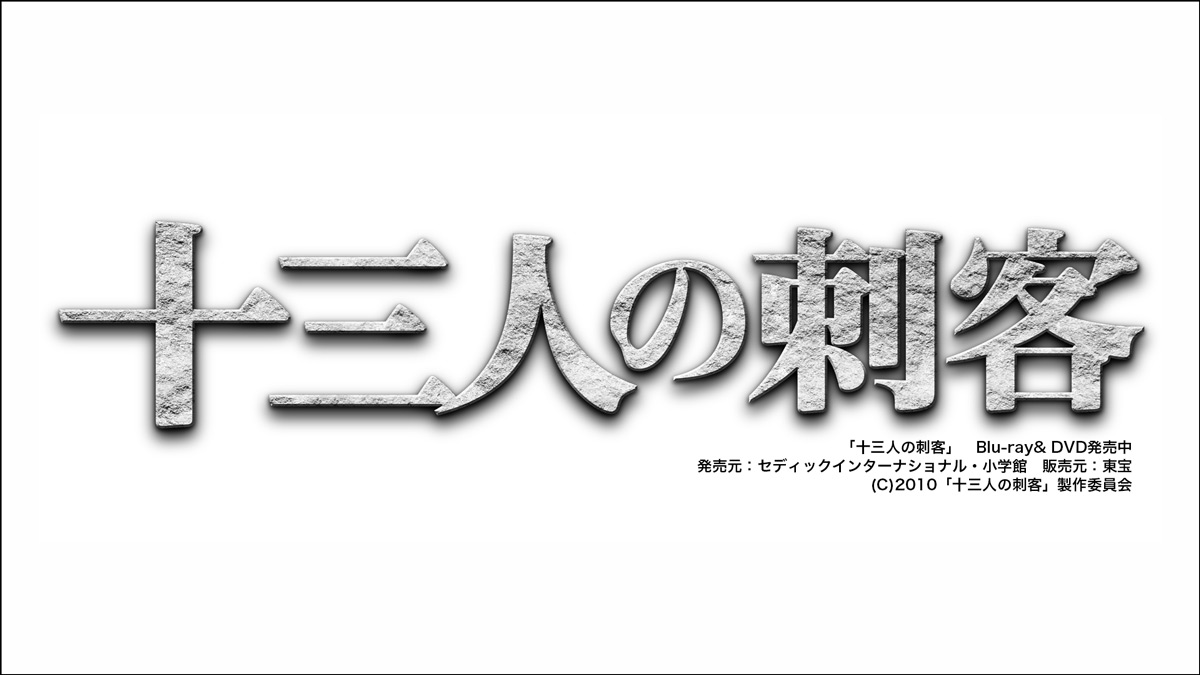
Respect for the original “Thirteen Assassins” is not enough! Takashi Miike's strong skill brought to life a masterpiece historical drama that remains in the history of film.
2017.10.12
The original version of “The Thirteen Assassins” is a “war movie”
The novelty of the original version of ` `Thirteen Assassins, '' and an important element of the remake, is the exquisite period setting of ``Hiroka 1.'' The first year of Koka was 1845 (some say 1844), and it was the end of the Edo period, which had lasted 265 years. 250 years have passed since the end of the Sengoku period, and it was a time when almost no one, no matter how samurai they were, wielded a sword to exchange lives.
This setting may feel more realistic in 2010 or modern times when the remake was made than in the 1960s of the original. It has been 72 years since the end of the war in Japan, and most of the generation that fought in the war are either dead or very old. The world of ``Thirteen Assassins,'' where samurai who have never killed each other wield their swords for the cause, is no different from the situation we live in today when we suddenly find ourselves on the battlefield.
The director of the original version, Eiichi Kudo, was born in 1929. Although he was only 16 years old when the Pacific War ended in 1945, Kaneo Ikegami, who wrote the script, was a veteran of the fierce battle on Peleliu Island. In the Battle of Peleliu, the Japanese army suffered almost annihilation, so Ikegami's survival was not at the level of ``nearly dying but surviving''.
The story of ``The Thirteen Assassins'' is based on the story of good, punishment, and evil in defeating a villainous lord. However, for Kaneo Ikegami, a ``fight for a good cause'' may have been nothing more than a ``slaughter'' after all. What is horrifying in the original version is the death of Kujuro Hirayama (Akira Nishimura), Shinzaemon Shimada's most trusted swordsman. Kujuro has mastered the art of swordsmanship, and his fighting ability is outstanding even among assassins. However, the moment he loses his sword in the melee, the master's composure disappears, and he runs around without worrying about his pretense and is brutally cut to death. It is a shocking scene with a strong irony that even a great swordsman becomes just another person if he loses his sword.
Furthermore, the ending of the original version is amazing. What is shown at the end is not the main character's assassins, but the Akashi clan's samurai, who were completely small characters. He runs away covered in mud from the post town during the fierce battle, and when he realizes that he is the only survivor, he bursts out laughing like crazy with relief. There is no "samurai pride," no "great cause," no "loyalty." I wonder if that was the image of Kaneo Ikegami himself, who miraculously survived the mountain of corpses being piled up at Peleliu.
A bold challenge unique to remakes that goes beyond respecting the original.

